Designing Your Life - Book Review
Contents
This blogpost summarizes some of the points from the book titled “Designing your life”, by Bill Burnett and Dave Evans.
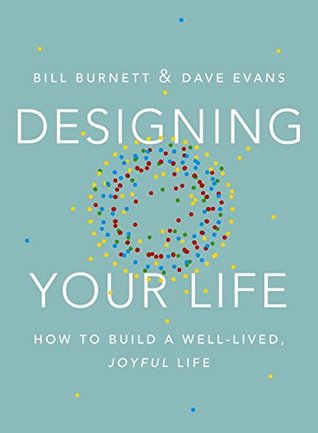
Introduction
The intro begins with three case studies that highlight dysfunctional thinking and how one can reframe each of those mindsets
- Dysfunctional Belief: Your degree determines your career
- Reframe: Three quarters of all college grads don’t end up working a career related to their majors
- Dysfunctional Belief: If you are successful, you will be happy
- Reframe: True happiness comes from designing a life that works for you
- Dysfunctional Belief: It’s too late
- Reframe: It’s never too late to design a life you love
Design problems are different from engineering problems. In the latter case, the problem is well stated and the solution is often a replicable solution. In the former case , there is no fixed problem; there is a desirable outcome. One requires an iterative approach and “build your way forward” approach.
Designers don’t think their way forward. Designers build their way forward. It means you are not just going to be dreaming up a lot of fun fantasies that have no relationships to the real world. You are going to build things(prototypes), try stuff, and have lots of fun in the process
One of the important aspects of applying design thinking to one’s life is “reframing”.
One has to reframe the question “What do you want to be when you grow up ?” to " Who or what do you want to grow into?". Life is all about growth and change. It’s not static. It’s not about some destination. It’s not about answering the question once and for all and then it’s all done. Nobody really know what he or she wants. There are just vague directions on a life path. There are so many questions that persist at every step of the way.
What is a well designed life ?
A well designed life is a life that is generative - it is constantly creative ,productive, changing, evolving, and there is a always a possibility of surprise
The five mindsets needed to design your life are
- Curiosity
- Bias to Action
- Reframing
- Awareness
- Radical Collaboration
These mindsets help one in “getting good at being lucky”
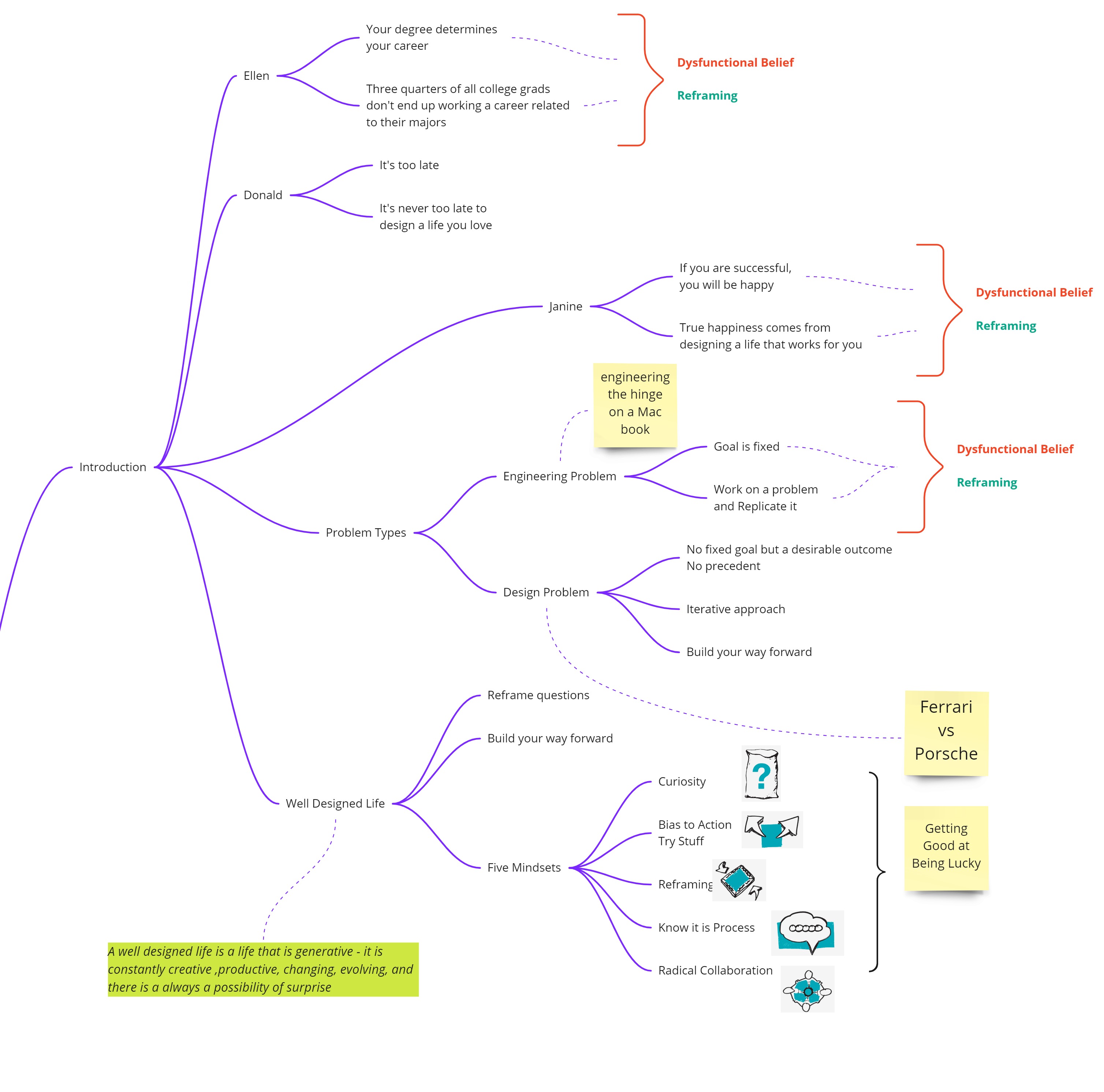
Start Where You Are
A well designed life involves problem finding and problem solving. Deciding which problems to work on may be one of the most important decisions you make, because people can lose years working on the wrong problem
The authors from their years of experience at the design lab find that
People waste a lot of time working on the wrong problem. If they are lucky, they will fail miserably quickly and get forced by circumstance into working on better problems. If they are unlucky and smart, they will succeed- we call it the success disaster - and wake up ten years later wondering how the hell they go to wherever they are and why they are so unhappy.
In some sense, the above statement resonates with me as I have spend last 6 years of my life working on a bunch of problems that I am not really sure whether they are right problems to solve. Yes they were all good problems to work as they involved working with massive amounts of data, deriving value from massive data sets and using NLP models to improve workflows. But are they the kind of problems that I really love solving ? Are they the right kind of problems ? Increasingly I have begun to realize that the answer might be a NO.
There are many appealing paths in front of me. Some of them are completely new and I have no experience whatsoever to pursue those paths. One of my friends has been asking me to look at crypto as that space is something that one can contribute a lot, given my skillset. The problem is that I have no clue about the space. By looking at the solution offered in this book, may be I should look towards prototyping and see whether the field is interesting enough to explore. Without prototyping conversations or prototyping experiencing, jumping in to the field is not something I should be doing, at least based on what the authors seem to be suggesting in the book.
The chapter ends with a quick exercise to rate yourself on four areas, i.e, work, play, love and health. A few minutes reflecting on these four areas will get you thinking on which of the four areas are not dialed up.
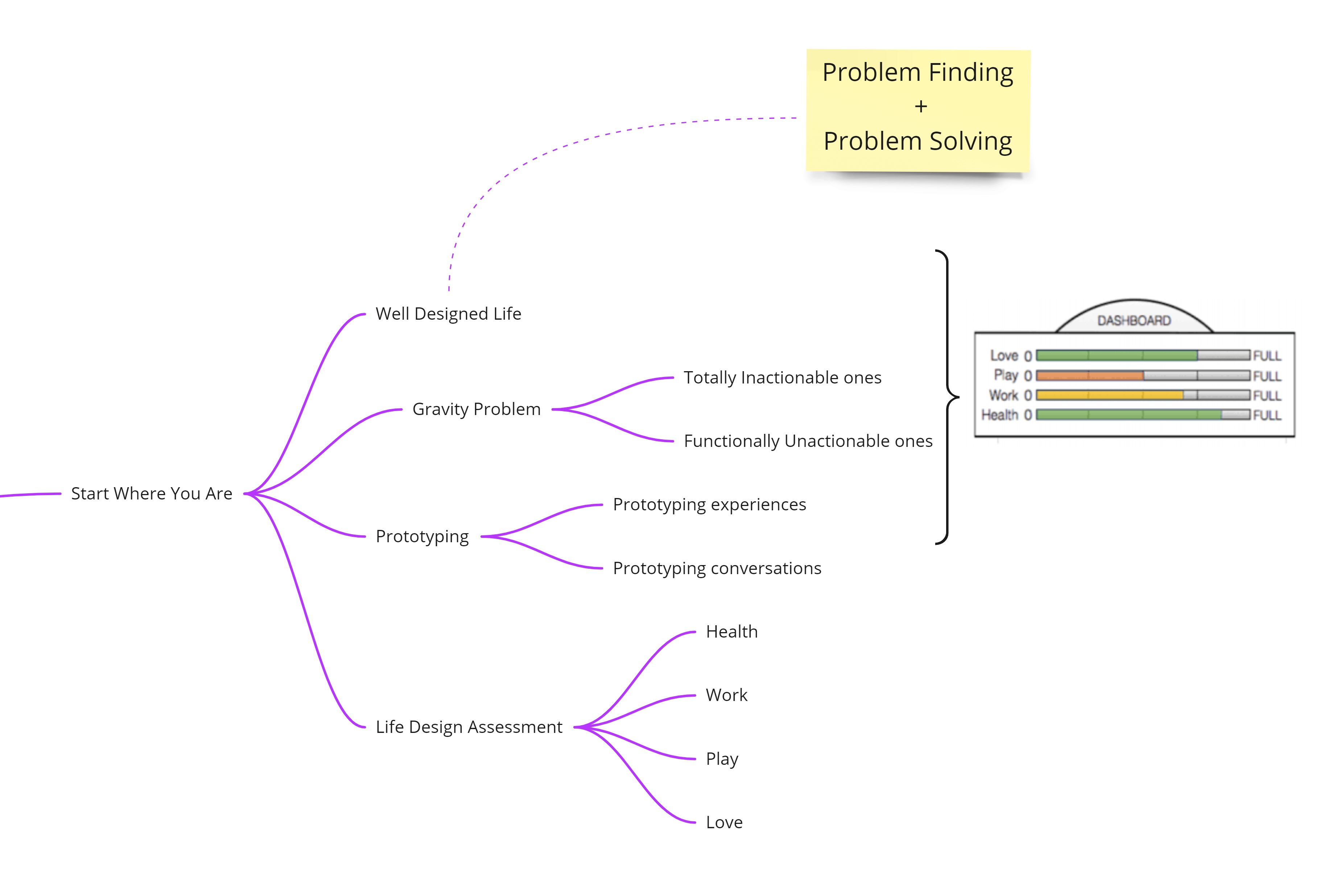
Building a Compass
This chapter urges the reader to spell out ‘Work View’ and ‘Life View’ and then see if one is driving the other. The purpose of writing down your work view and life view is that it gives a compass in your life for way finding. Once you write down your work and life views, see the coherency or incoherency between the two, you start thinking about it and start applying design principles to reframe and reflect on some of the questions you might have in the area.
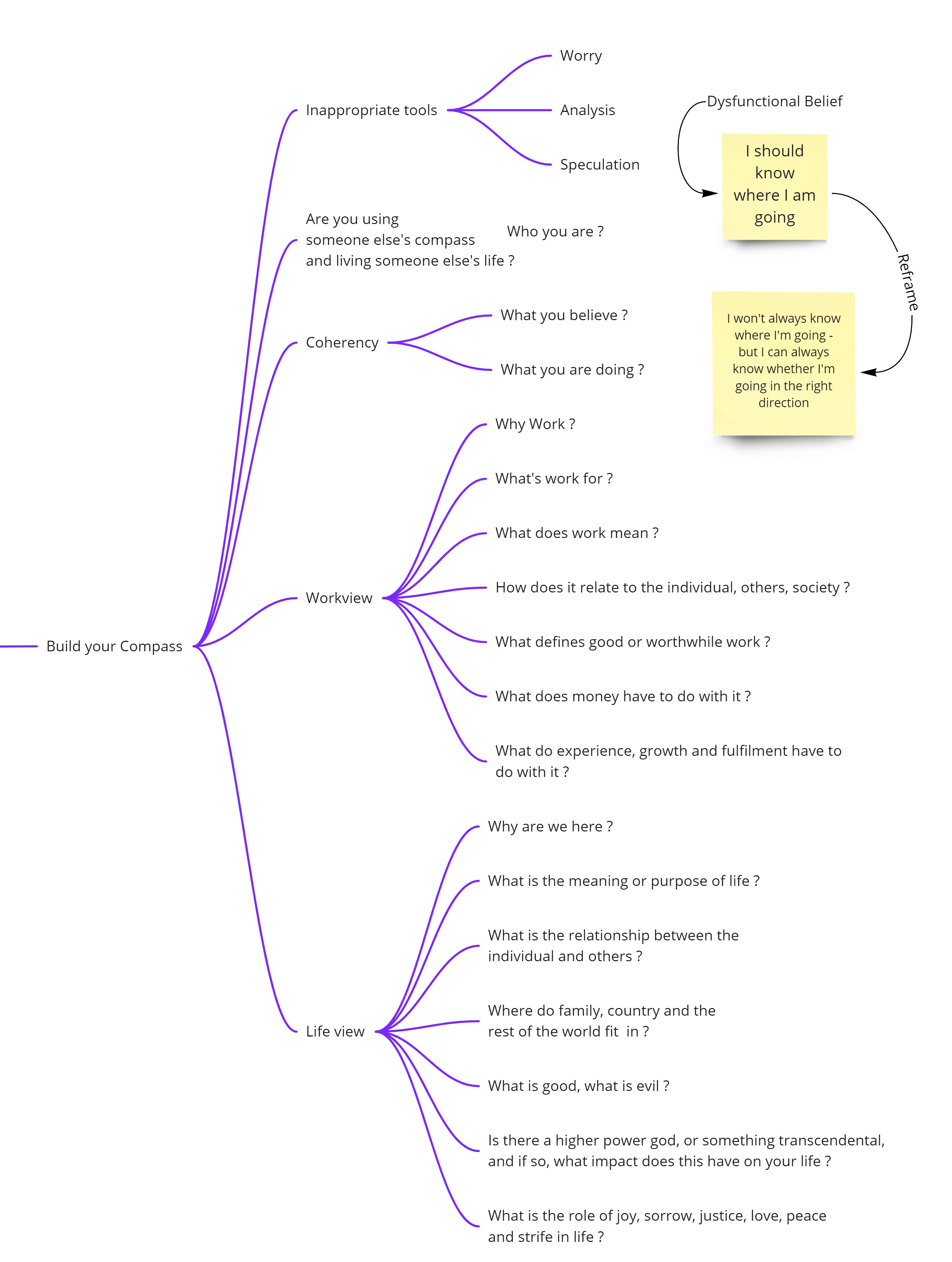
Way Finding
The dysfunctional belief suggested in this chapter are
- Dysfunctional Belief: Work is not supposed to be enjoyable, that’s why they call it work
- Reframe: Enjoyment is a guide to finding the right work for you
In order to way find, you need a compass and not a map.
All of us are motivated by different kinds of work activities. Your job is to figure out which ones motivate you—with as much specificity as you can. It will take a while to get the hang of this, because, if you’re like most people, you’ve not been paying detailed attention to this sort of thing. Sure, there are times when we all come home at the end of the day and say, “That was great,” or “That sucked,” but we seldom sift through the particulars of what contributed to those experiences. A day is made up of many moments, some of which are great, some of which suck, and most of which lie somewhere in between. Your job is to drill down into the particulars of your day and catch yourself in the act of having a good time.
The author suggest a good time journaling exercise that helps the reader capture activities on a daily basis and rate those activities on energy and engagement scales
Engagement: when you’re engaged, you are mentally and emotionally involved - time flies!
Energy: some activities feed our energy, and others suck the life out of us and leave us drained for what comes next.
Once you have a decent collection of activities, you can mine them to figure out which of the activities are energizing and engaging.
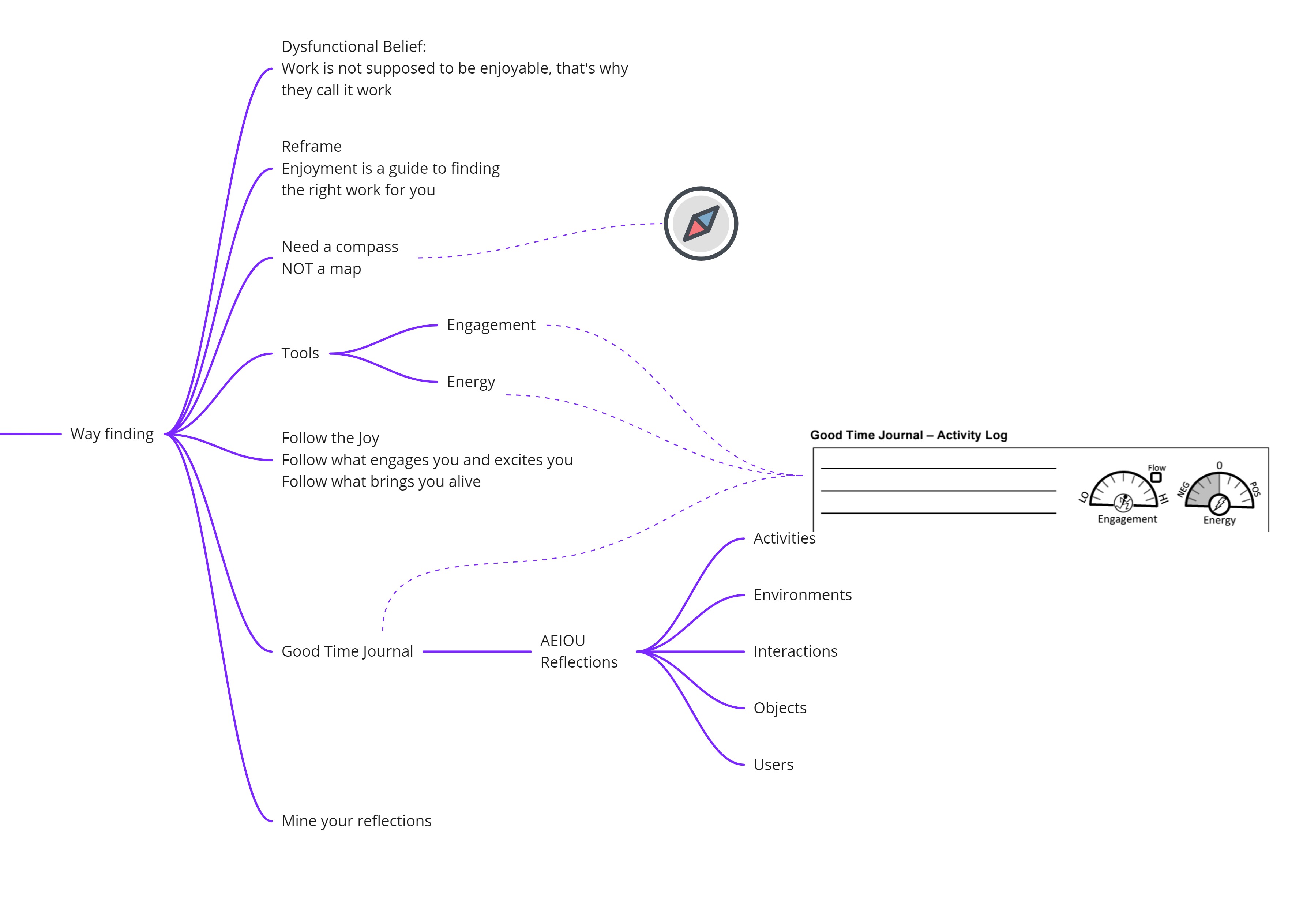
Getting Unstuck
The chapter talks about two dysfunctional beliefs that might need reframing
- Dysfunctional Belief: I am stuck
- Reframe: I am never stuck, because I can always generate a lot of ideas
- Dysfunctional Belief: I have to find the one right idea
- Reframe: I am never stuck, because I can always generate a lot of ideas
The authors suggest that we all have a design thinking mindset, i.e.
- You choose better if you have lots of ideas from
- You never choose your first solution to any problem
In order to generate lots of ideas, the authors suggest mindmapping approach that can free your mind and explore various options based on flow inducing activities
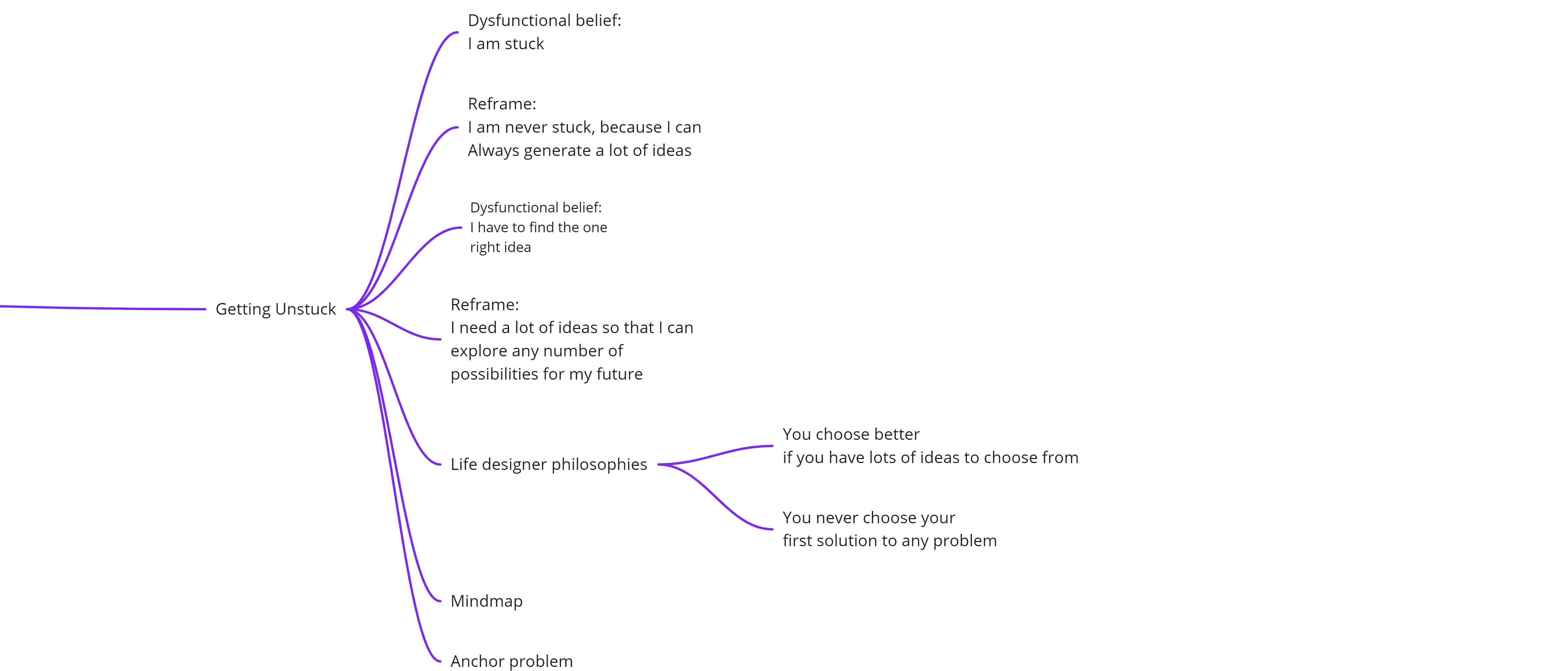
Design your lives
The chapter talks about the following dysfunctional belief that might need reframing
- Dysfunctional Belief: I need to find the best possible life, make a plan,and
execute it
- Reframe: There are multiple great lives within me, and I get to choose which one to build my way forward
The key idea from the authors is that one must embrace multiple personalities and this can be achieved by writing down three possible life plans each spanning the next 5 years. It is not by thinking but actually writing through the possible futures and creating a visual, that one gets better insight in to these alternative lives that we can live
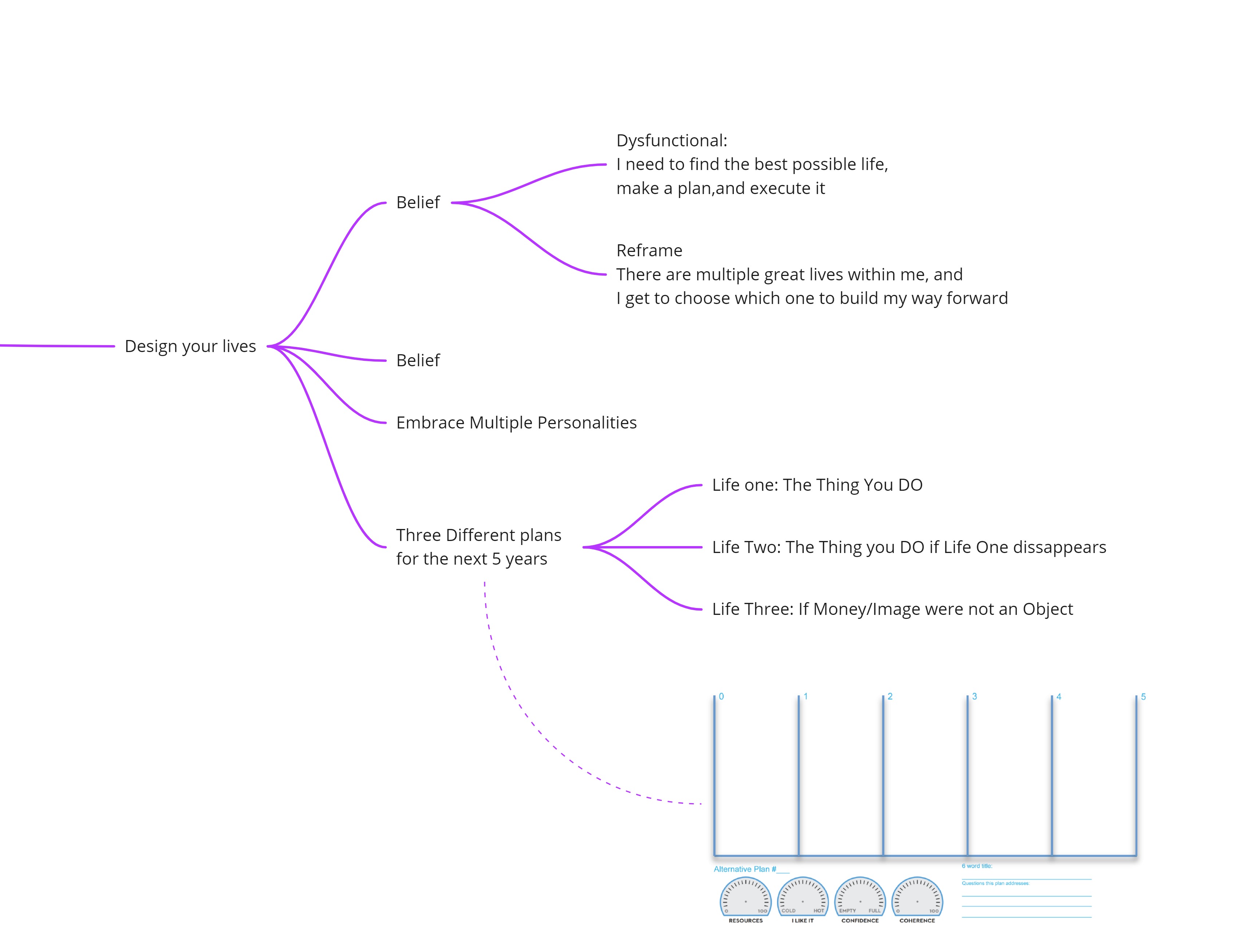
Prototyping
The chapter talks about the following dysfunctional beliefs that might need reframing
- Dysfunctional Belief: If I comprehensively research the best data for all
aspects of my plan, I’ll be fine.
- Reframe: I should build prototypes to explore questions about my alternatives.
The ways to prototype are via prototyping conversations and prototyping experiences. The former involves reaching out to people and understanding the various aspects of path that you would like to take. Prototyping experiences means actually living the parts of the path that you are interested in taking. Both can be done in such a way that you don’t have to quit your job. You can get these activities done with in the current context. The idea is that these prototype conversations and experiences are a precursor to deep reflections that can help you choose your path among the multiple paths available
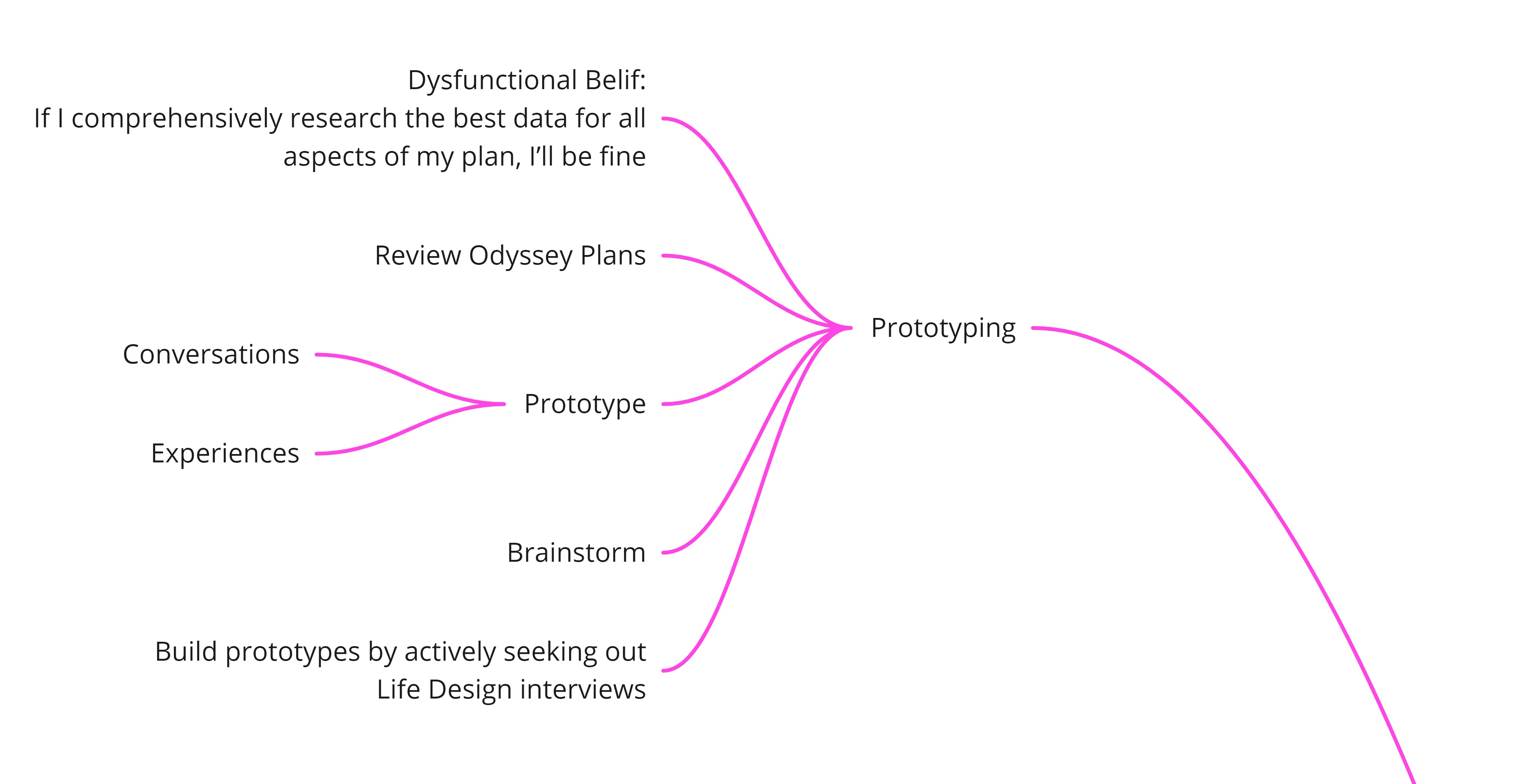
How Not to get a Job ?
The authors suggest not to scout for job listings on the internet for various reasons. However if one insists on going through the route, there are a few hacks in it.
Every one I assume would have looked at JD’s advertised on job portals and have wondered whether the job requires superhuman to do it as the JD typically mentions unending skillsets listed for doing the job. The authors do a great job of highlighting aspects such as the way big companies avoid false positives and the way some of the companies post Phantom Job listings to meet some random criteria.
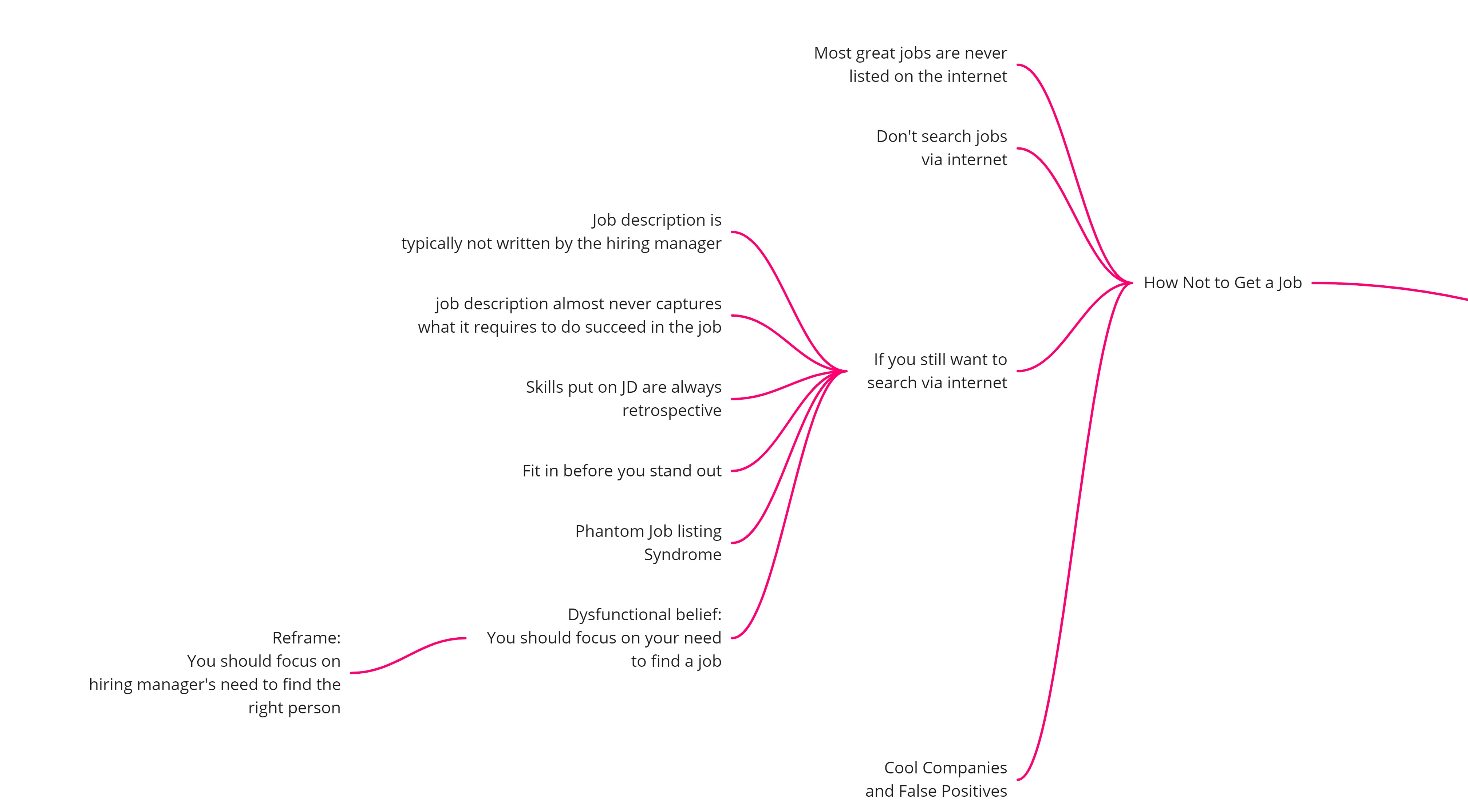
Designing your dream job
The authors suggest that the best way to design your dream job is to prototype, i.e. prototype experiences and prototype conversations. There is a hidden job market that is only visible to insiders and the relevant network. Hence there is no point in scouting internet for job postings. It is only via networking and being genuinely curious, one can hope to get a chance to explore these hidden jobs.
The authors also highlight the following dysfunctional beliefs:
- Dysfunctional belief: Networking is just hustling people
- Reframe: Networking is just asking for directions
- Dysfunctional belief: I am looking for a job
- Reframe: I am pursuing a number of offers
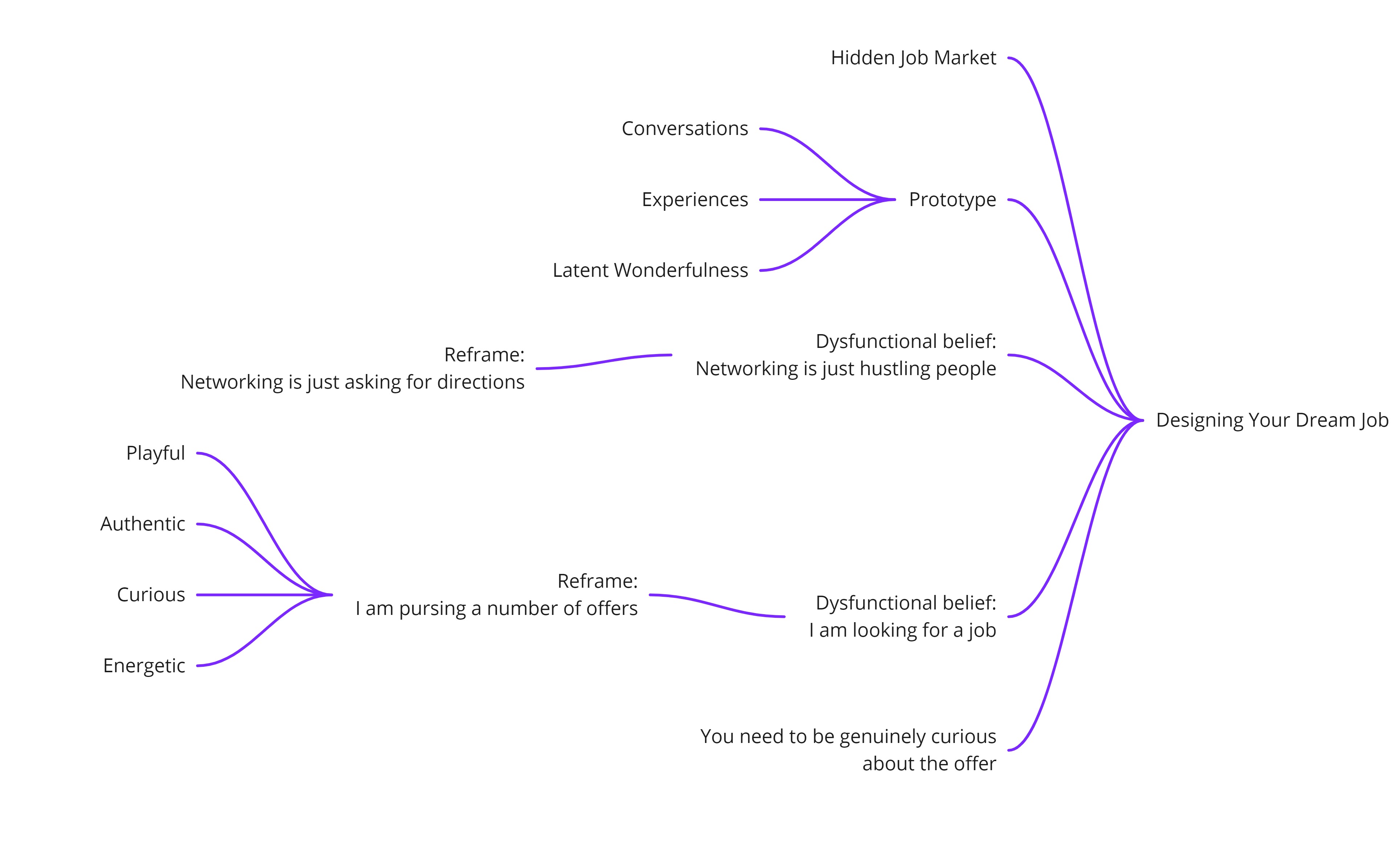
Choosing Happiness
This chapter gives a few hacks to improve the decision making such as
- Grokking your choices to get a better feel of the choice
- If you too many options, then you don’t any option at all
- Gather&Create, Narrow down, choose, let go & move on are the four components in the decision making process
The authors also highlight the following dysfunctional belief:
- Dysfunctional Belief: Happiness is having it all
- Reframe: Happiness is letting go of what you don’t need
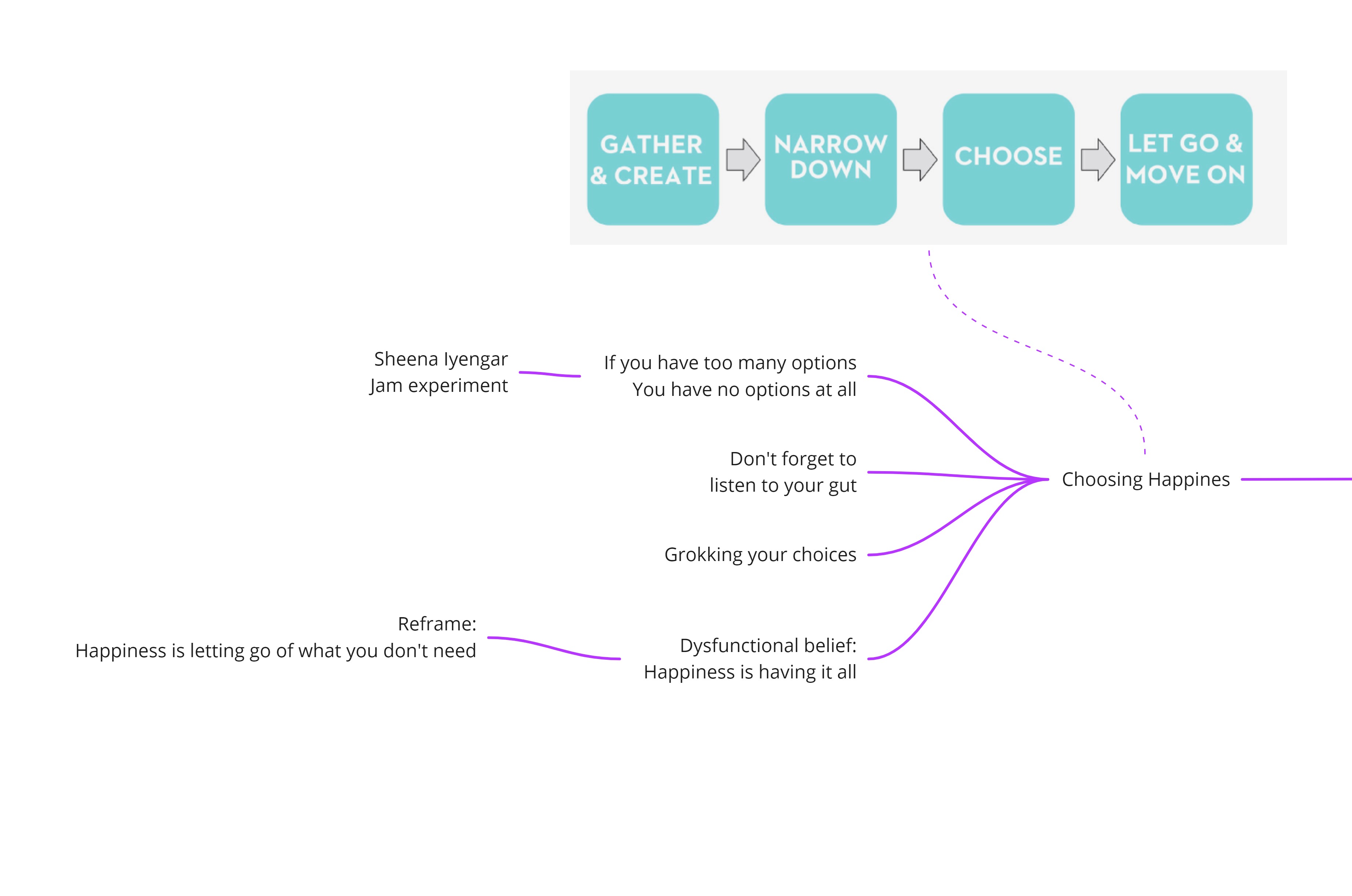
Failure Immunity
The authors suggest reframing our life from an outcome based one to a process based one. Viewing our life as a process, all outcomes are good as they allow us to learn about the design process. The authors also suggest a way to keep a log of failures on a weekly or a monthly basis. The more I think about most of the hacks mentioned in the book, the more it looks like the hacks are all about capturing the moments as they happen in our lives rather than remembering about failures. By looking at events as they happen, one might get away from the mind tricking in to believing in something that might be incorrect or massively edited
- Dysfunctional Belief : We judge our life by the outcome
- Reframe: Life is a process, not an outcome
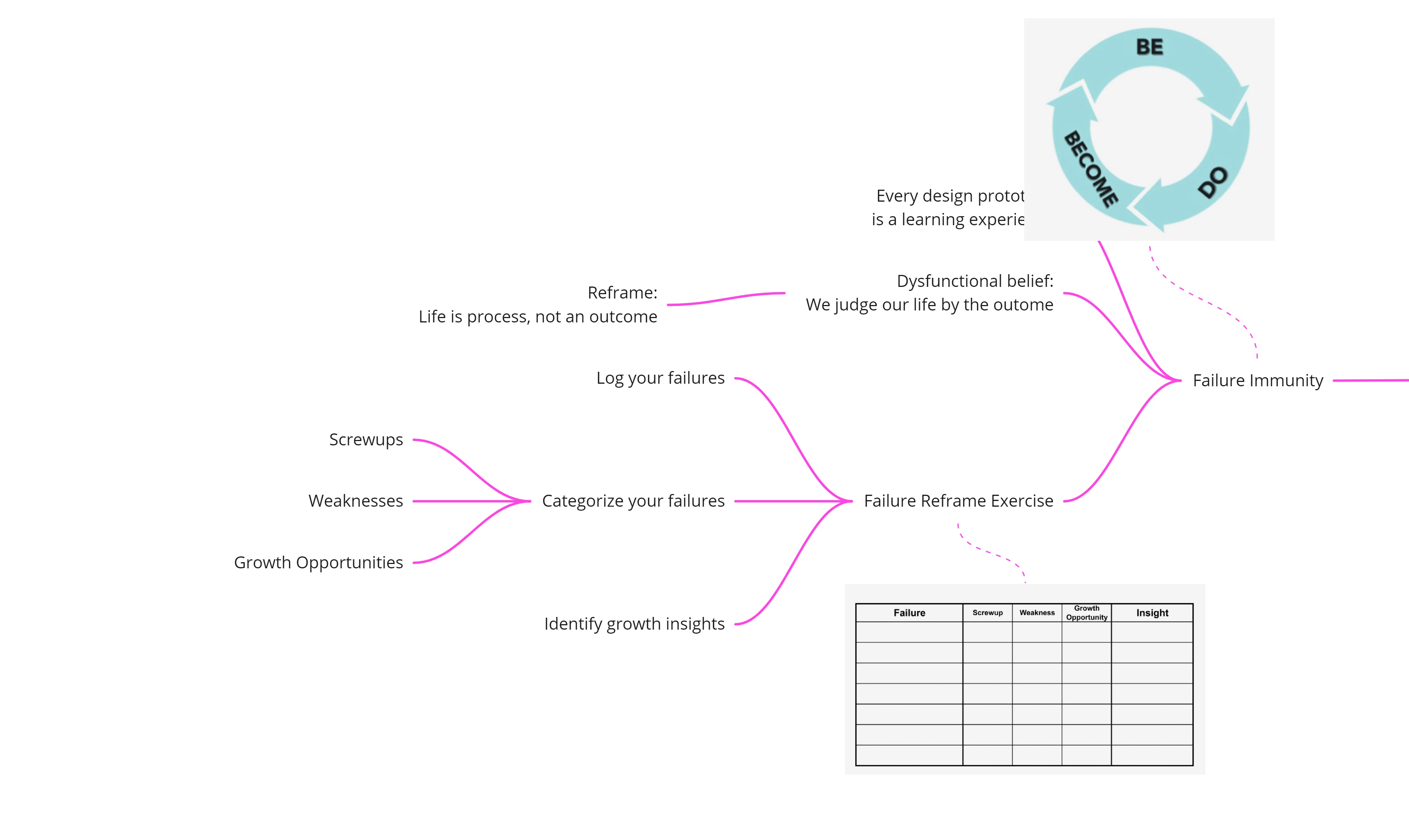
Recap of Dysfunctional Beliefs
| Dysfunctional Belief | Reframe |
|---|---|
| Your degree determines your career. | Three-quarters of all college grads don’t end up working in a career related to their majors. |
| If you are successful, you will be happy. | True happiness comes from designing a life that works for you. |
| It’s too late. | It’s never too late to design a life you love. |
| I should already know where I’m going. | You can’t know where you are going until you know where you are. |
| Work is not supposed to be enjoyable; that’s why they call it work | Enjoyment is a guide to finding the right work for you. |
| I’m stuck. | I’m never stuck, because I can always generate a lot of ideas. |
| I have to find the one right idea. | I need a lot of ideas so that I can explore any number of possibilities for my future. |
| I need to figure out my best possible life, make a plan, and then execute it. | There are multiple great lives (and plans) within me, and I get to choose which one to build my way forward to next. |
| If I comprehensively research the best data for all aspects of my plan, I’ll be fine. | I should build prototypes to explore questions about my alternatives. |
| You should focus on your need to find a job. | You should focus on the hiring manager’s need to find the right person. |
| My dream job is out there waiting. | You design your dream job through a process of actively seeking and co-creating it. |
| Networking is just hustling people—it’s slimy. | Networking is just asking for directions. |
| I am looking for a job. | I am pursuing a number of offers. |
| To be happy, I have to make the right choice. | There is no right choice—only good choosing. |
| Happiness is having it all. | Happiness is letting go of what you don’t need. |
| We judge our life by the outcome. | Life is a process, not an outcome. |
| Life is a finite game, with winners and losers. | Life is an infinite game, with no winners or losers. |
| It’s my life, I have to design it myself. | You live and design your life in collaboration with others. |
| I finished designing my life; the hard work is done, and everything will be great. | You never finish designing your life—life is a joyous and never-ending design project of building your way forward. |
Takeaway
I found the book very useful given that I am a juncture where I am considering a career change. There are many hacks in the book that are very useful in thinking about “life” as a design problem and working one’s way using design thinking skills